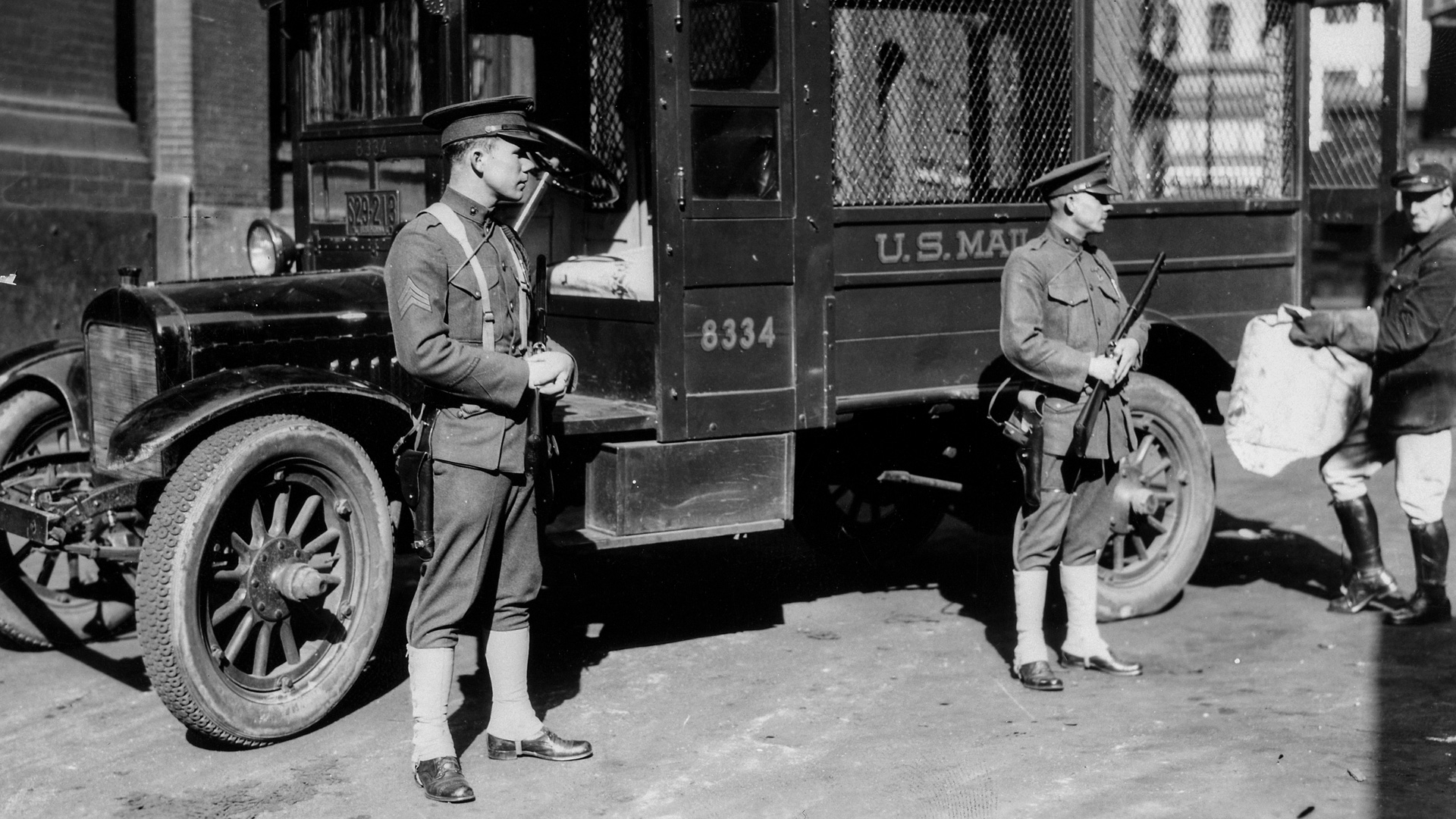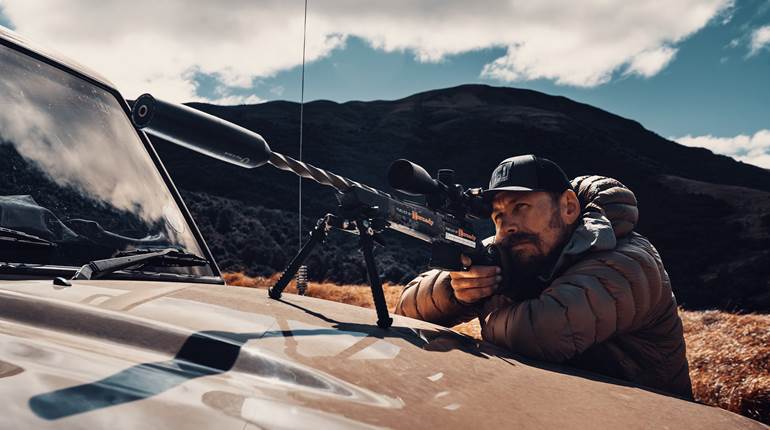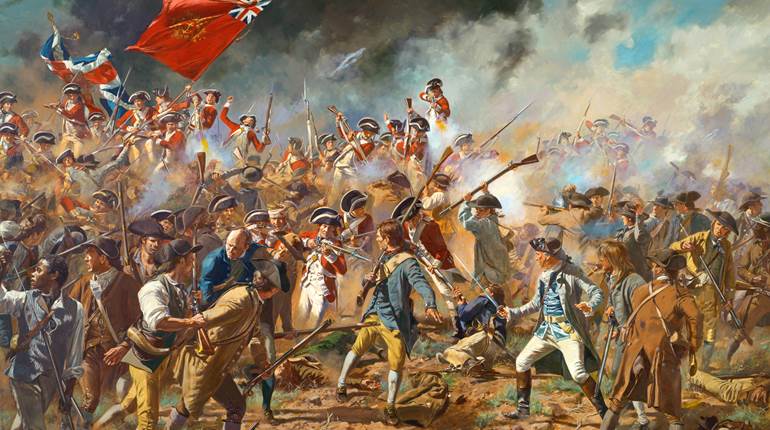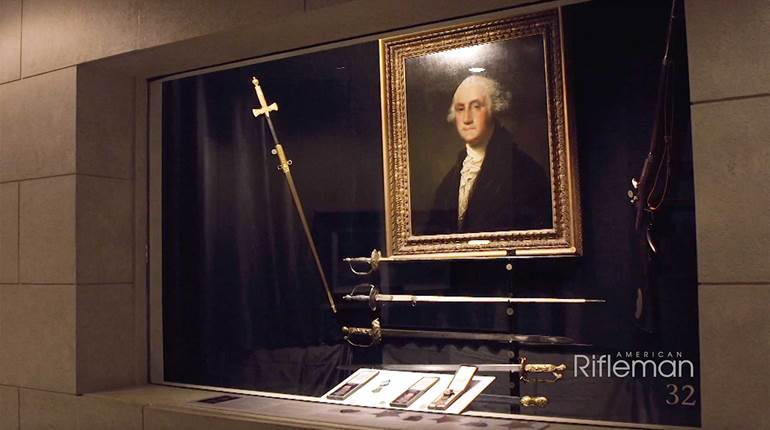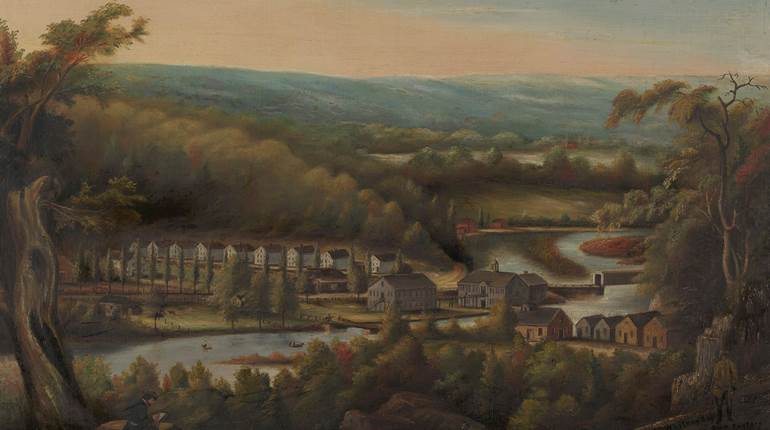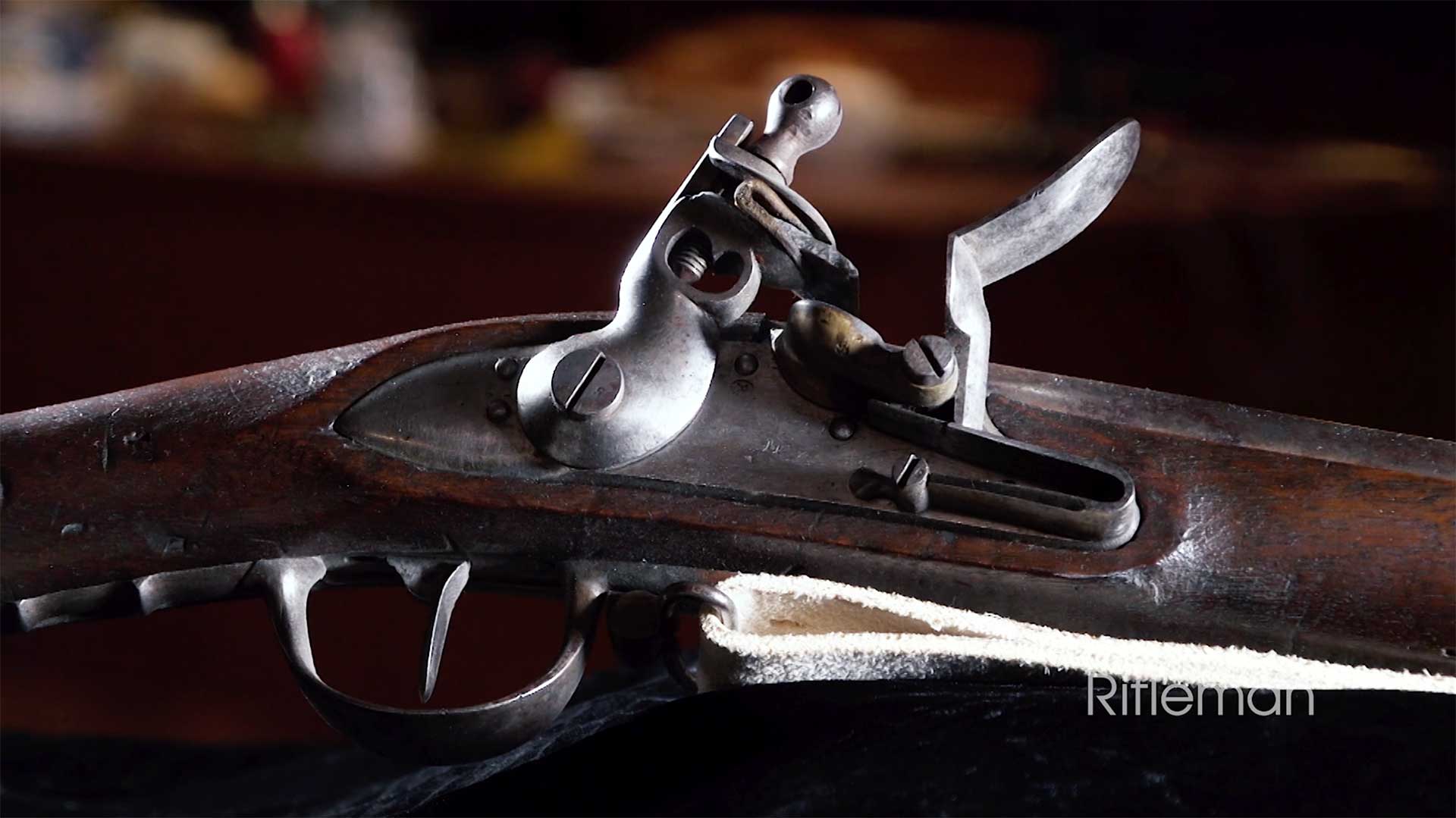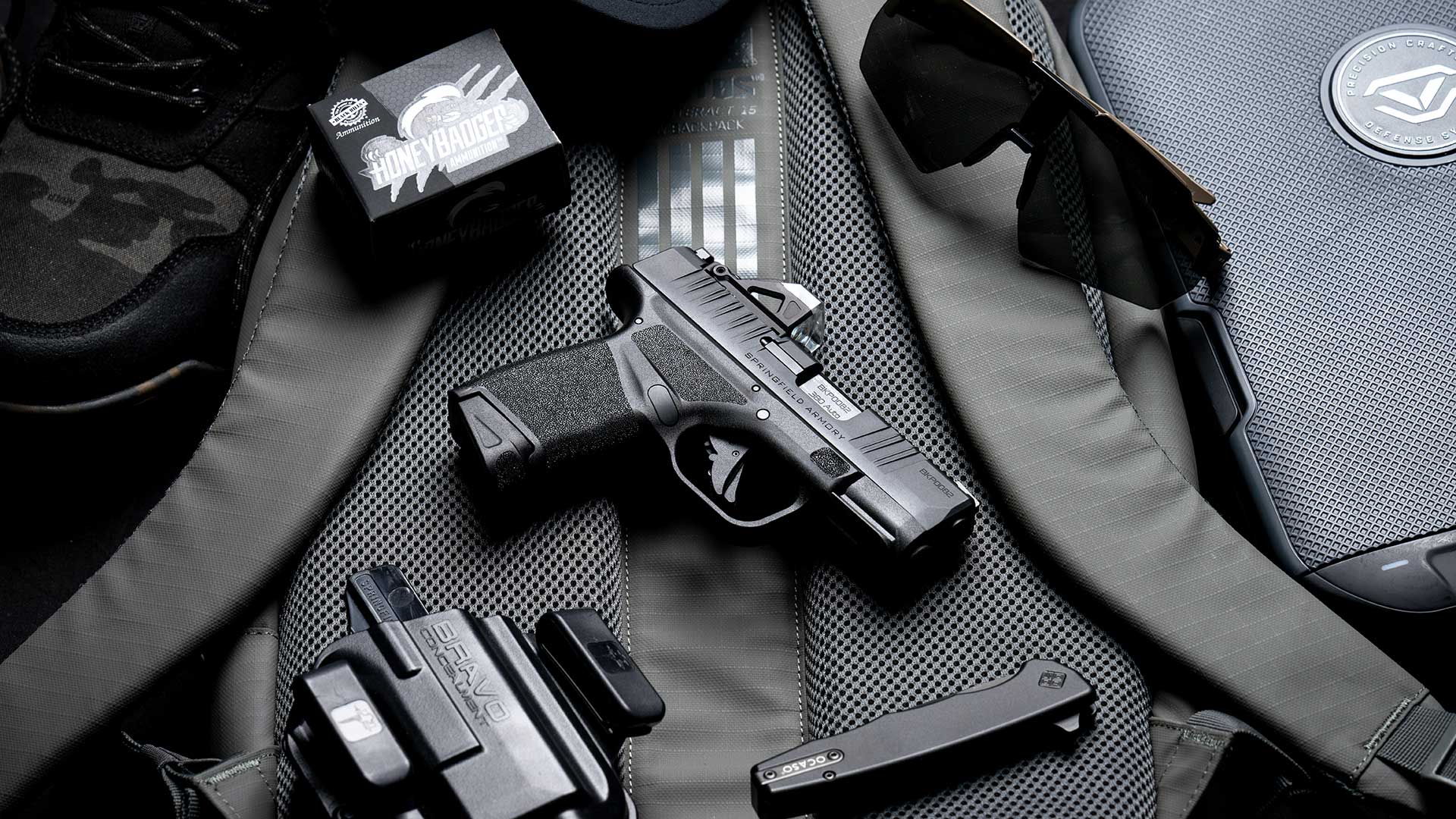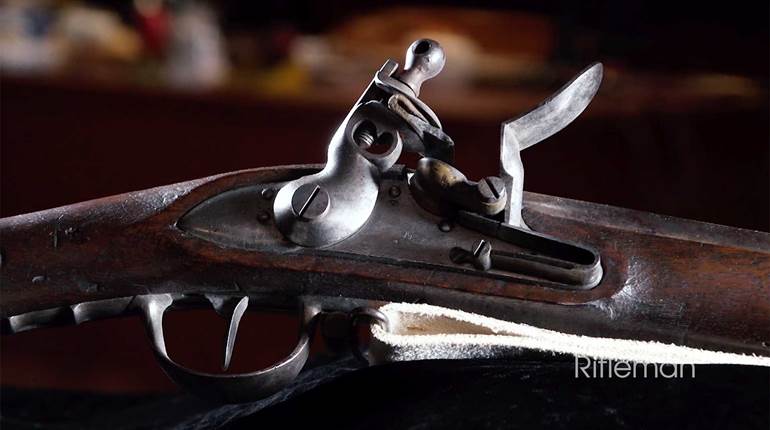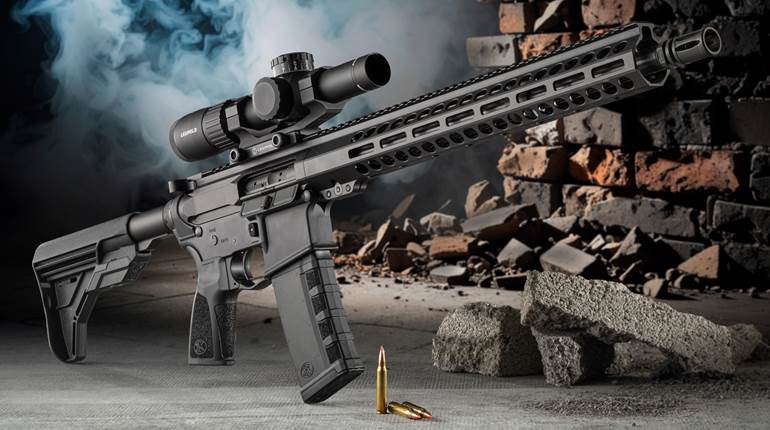
One hundred twelve years ago this summer, our Uncle Samuel, then a youngster afflicted with growing pains, was having an argument with England, historically known as the War of 1812, but what really amounted to a continuation of the Revolutionary struggle and determined whether or not Sammy was to be able to walk alone without being continually bossed and spanked by the former parent country.
The warfare argument of that day had about the same end in view as the present one, to kill the other fellows in as large quantities and expeditiously as possible. However the methods in vogue were somewhat different from now and seem a bit crude in these days of gas, machine guns, air and submarine craft, long-range rifles, artillery, etc. It was the period of smooth-bore cannon and muskets of the regular or professional soldier, interspersed with the long black flintlock rifle of the pioneer settler turned soldier overnight. The actually firing range for the artillery usually was not much over five hundred yards, desirably closer if the guns could be properly protected from sudden rushes from the enemy. The rifleman had the call on the smooth-bore musket both for accuracy and range, but even he preferred to pot his adversary at not more than a hundred and fifty yards at most, and considered himself at home against the British regular, unless, as sometimes happened, the latter came in too numerous and too fast with his "Brown Bess" with the long bayonet attached, in which case it was apt to be a different story. There were, however, exceptions and stunts in that day as well as in ours, and it is one of these exceptions, as Harry Lauder says, that we are going to tell you about.
That section of the country from Ft. Wayne at the headwaters of the Maumee River, down that river to its mouth at Maumee Bay, now the site of the city of Toledo, and on up to the frontier outpost at Detroit, was the scene of stirring and momentous times. Hull, after a laborious march with his army, cutting its way through the dense woods of Northwestern Ohio, managed to reach his destination at Detroit in time to surrender his force to the British without a fight. A second expedition under General Winchester was badly defeated at the River Raisin, and affairs looked decidedly down in the mouth for the Americans.
As a last attempt to retrieve the fallen fortunes of the day, a third army under General Harrison came down the Maumee from Ft. Wayne and built a fortification on the easy bank of the river, naming same after Meigs, then governor of Ohio.
Ft. Meigs was a stronghold typical of the day. Erected on high, level ground and comprised of earthworks surmounted by palisades and blockhouses from which to repel trouble, it was barely inclosed and far from completed when trouble arrived from Detroit in the shape of a large force of British and Indians under command of General Proctor and the celebrated chieftain, Tecumseh.
Proctor, under cover of night, promptly erected two batteries of artillery where he considered they would do the most good, or harm, according to the viewpoint of those most interested, and proceeded to go to work on the fort. When it is noted that the farthest of these batteries was less than five hundred yards and the other only two hundred and fifty yards from the fortifications, the latter being as large as a city block as a target, there is little likelihood that much of the old iron heaved over by the guns of either battery went very far astray. Many of the bombs failed to explode, and buried themselves in the soft dirt of the fort. The Americans, a bit short of the same kind of material, promptly dug up these duds and sent 'em back at their former donors in the original package. It is recorded that General Harrison issued an order giving a gill of whiskey to each soldier who produced a cannon ball that could be used over, and that more than one thousand gills of perfect good liquor was issued for balls turned in. What a willing bunch of volunteers the General could get today. Why, we know a chap or two who would volunteer to swim the river and deliver the original supply, huh?
Meanwhile Tecumseh's Indians invested the fort on all sides but could do little except to keep the defenders on edge between times dodging the cannon balls. The front facing the river could be very well protected from fire from either flank by watching rifleman along the walls or from the blockhouses at the corners of the stockade, which was extremely fortunate for the reason that the siege was on before the defenders had had time to dig a sufficient number of wells for water supply, consequently, they had to depend upon the river. It was on this front that the incident occurred that will be of interest to our present-day crop of long-range rifle shooters.
Both banks of the river, above and below the fort, were heavily wooded, as was indeed the whole country for miles in every direction, but from the fort to the water's edge there extended open lowland for about one hundred yards. Protected by rifles from within the fort, water carriers at this point could go and come in comparative safety. There was, however, one small fly in the ointment.
Across the river from the fort on high ground stood an elm tree to one side and farther distant from the fort than the British battery located on that side of the river. It was up this tree that an Indian marksman climbed to a fork or crotch where he could look over into the fort and observe the water parties coming down to the river. From this vantage point he proceeded to have a whale of a time pestering the water carriers as they waded out for a supply.
The smoke from the warrior's rifle could plainly be seen from the fort, revealing his position in the tree, but the range was considered too great for an effective reply. For two or three days he had things all his own way in the game. The sharpshooter appeared to improve with practice, and after two soldiers had been seriously wounded, the thing ceased to be funny to those compelled to be the butt of the joke.
Among the Kentucky rifleman in the fort there happened to be a lanky chap whose name might well have been Winder, Casey, McBride, or perhaps an ancestor of one or more of our long-shooting Marines. Who knows? But at any rate his name was Kirk, and he had ideas of his own about the pest in the tree across the river having all the fun. Kirk begged permission to try his hand on the Indian, but as the officers considered the range too great and since the precious supply of powder and ball was running low, he was refused permission until the third man had been hit, then he was told to have a try.
Finding a suitable rest for his rifle, Kirk figured his trajectory, made his allowances for wind drift, and patiently waited for the smoke from the discharge of the rifle in the tree. When this came, the Kentuckian sparked his flint and the fifty to the pound round ball was on its way.
Results were at once noticeable to the eager watchers in the fort. First, a long rifle was seen to fall from the tree, followed a moment later by the sprawling body of what had been undoubtedly the finest marksman of the British and Indian force. Kirk's lucky shot at least ended the sniping from that point.
As the wooded country about the old fortification gave way to the settler's ax, and fine farmhouses came into being, each succeeding generation has added its bit to the change in the topography. The village of the Maumee stands on the site where Col. Dudley and his 800 brave but undisciplined Kentuckians were practically annihilated. Up and down the river its banks are dotted with the cottages of the summer resident. Until recently the locally famous old elm where the Indian conducted his target practice withstood the storms, and, by its story was protected from the more destructive designs of man.
The writer, as a small boy, listened with aw to the tales of the siege of Ft. Meigs, especially the oft-repeated and varied tale of the shooting of the Indian across the river, the distance always changing with the imagination and environment of the relator, but usually from one-half to more than one mile.
As young men we had sat on the old earthwork, still in a fair state of preservation, where Kirk figured his range and gazed at the old tree. With our imagination running riot we depicted the scenes as they must have been at the time when the old round ball sped across, true to its mark at about six hundred yards.
The other day we stood at the same spot, but the Muse would not come. Gone is the old tree, and reared upon its place is an unsightly bungalow.
Editorial Note: The interesting narrative just presented by Captain Richard portrays an authentic incident which occurred during the siege of Fort Meigs. Present-day rifleman, or those unfamiliar with the merits of the old Kentucky rifle, may express some doubt as to the ability of a flint lock to perform the feat described. For the benefit of such we wish to say that recent experiments have demonstrated that a flint lock rifle of about .45 caliber will develop an average muzzle velocity in the neighborhood of 1350 feet and can be given an extreme muzzle velocity of 1600 feet. The extreme range of such rifles ran from 900 to 1200 yards. At a range of 600 yards a round ball weighing 140 grains and fired at a muzzle velocity of 1350 feet will have a remaining velocity of 445 feet.
Nevertheless this feat may seem incredible to rifleman of the present day whose acquaintance with flint lock rifles has been limited to a few dilapidated and rusty specimens of army muskets, and who have never enjoyed the privilege of firing a rifled flint lock in good condition, with the bore clean, and the flash hole or vent not rusted away to three or four times normal size. Furthermore, there was an art in properly loading these rifles, an art which is lost today.



